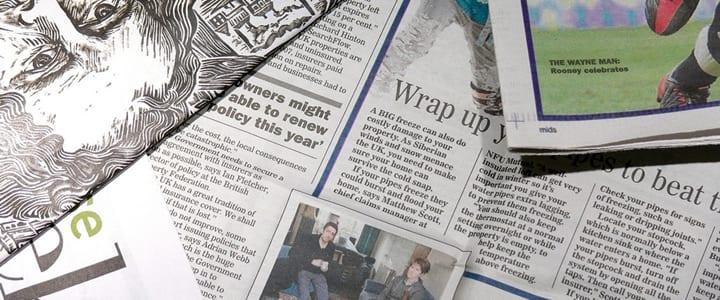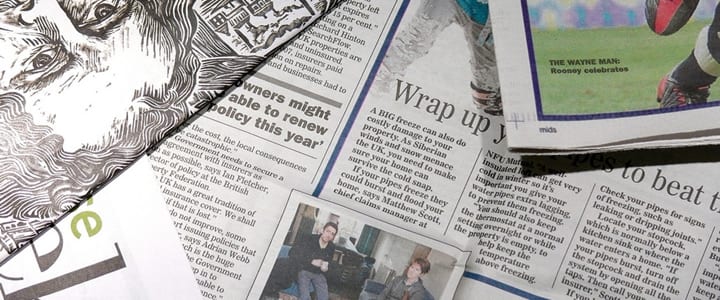Interested in trying your hand at journalistic writing? Here, Olympia, WA tutor Tali H. explains the seven simple steps for writing an article…
Being a reporter has a number of benefits: you get to meet people, talk, find out about what’s going on in your community, and keep your writing skills in tip-top shape. However, it can also be difficult –especially if you’re trying to meet an upcoming deadline. Here’s a simple breakdown for writing a medium-length journalistic article if you’re ever in a pinch.
1. Find a Worthy Subject
One of the main goals with journalistic writing is finding a topic that people care about. The more interested people are in the subject, the more popular your article will be. It also helps when writing an article if you have real passion behind the “story” you’re telling.
2. The Interview
Journalistic writing is generally not about the writer’s opinion. Yes, that can be added to the mix in certain circumstances. But usually, the writer is capturing the thoughts and opinions of people more closely involved in the story or event. This actually makes it a lot easier. Instead of coming up with content, the reporter simply summarizes, paraphrases, and quotes. However, the content has to come from somewhere!
The reporter must seek out those involved in the story, which can often require critical thought. In many cases, the ideal number of sources ranges from 3-5 people, depending on the particular type of article. If the article is a spotlight on a specific person, it would be good to get a long interview with that person and then shorter interviews with others involved. Always record the interview. Taking notes is not the best idea, especially if you will be directly quoting someone (people simply talk too fast and too long for you to jot down everything they’re saying). In many cases, you won’t know what’s important until you’ve heard the whole story. At that point, you’ll need to be able to rewind and listen to it again to really comprehend what’s been said. I use an app on my phone called iTalk.
3. The Write-Up
Once you have the interview, it’s important to type it up. Most interviews are generally between 15 to 45 minutes, and typing them up usually takes about twice that time. However, as time consuming as this step may be, it really makes the rest of the process much easier. Note: You don’t have to write every word up. If there’s content you know you won’t be using, just skip over that part.
4. The Lead
When writing the lead, it’s worth it to take a few minutes and answer these questions in your head (or on paper, if that works better for you): What is the most interesting/important/hooking element of the story I want to tell? How can my article showcase that right off the bat and pull the reader in? Once you have these questions figured out, form the lead.
5. The Body
Now, that you have a starting point, you simply fill in the story with quotes from the interview and summarization. (I generally have my write-up on one document and the article on a separate document. Then I split the screen so I can see both. This way I can easily refer to the interview material while writing the article.) Remember though, you need a balance. I usually interweave two lines of summary with every quote. A good reporter also has plenty of transition statements that subtly direct the reader through the article. For instance: what’s more, however, at first, initially, conveniently, according to, although, then, in the beginning, etc. As I write the article, I refer to the interview material and somehow differentiate between the material I’ve already incorporated in the article (usually by highlighting) so I don’t repeat myself.
6. The Conclusion
In all honesty, most people don’t read an article all the way through to its conclusion – especially these days, when people are generally speed-reading through articles. However, it’s always nice to wrap up an article with a powerful final quote and a summarization that can be applied in a broader context. For example, in one article I wrote, I was doing a spotlight on a student musician who started in Olympia, Washington. In my conclusion, I did a quick summary statement (“It’s passion like hers that has propelled other talented musicians to fame”) and then applied it to a broader context (“The now rich and extremely famous Macklemore also came from humble beginnings in Washington, even attending The Evergreen State College in Olympia”).
7. Finding the Perfect Title
Although it may seem backwards, I always wait until I’m finished writing the article to come up with a title. The title is the most important part of your article. If you don’t have a title that pulls people in, they won’t even glance at your writing –making all that work for nothing. When you’re finally done writing an article (and you’ve read through it a few times to make sure there are no mistakes and everything flows well), take at least five minutes to brainstorm a GOOD, INTRIGUING title. Find good attention-grabbing words that capture the context of the article. But don’t stop there. Play with the title. Try a few different formats, try puns (people love play on words). For example, one of my favorite titles was “Olympia Student Opens the ‘Gates’ to the Next Generation in Computer Science.”
 Tali H. tutors in various academic subjects in Olympia, WA, as well as through online lessons. Since 2010, she has worked with numerous students in elementary, middle, high school, and college in both group settings and one-on-one. Learn more about Tali here!
Tali H. tutors in various academic subjects in Olympia, WA, as well as through online lessons. Since 2010, she has worked with numerous students in elementary, middle, high school, and college in both group settings and one-on-one. Learn more about Tali here!
 Photo by John Davey
Photo by John Davey
Suzy S.

